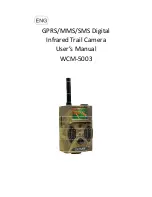
V1.02
Thom Hogan’s Complete Guide to the Nikon D300
Page 213
easier to get to the control, but note that to be fully
accurate, your eye needs to be at the position it would
be if the eyecup is in place.
4.
Verify the setting by having the camera focus on a
subject and checking to see that the image in the
viewfinder appears sharp (it may not be perfectly so,
as the viewfinder glass tends to diffuse detail slightly,
but you should still be able to verify that focus is
sharp).
If you wear glasses or contact lenses, make sure to let your
optometrist know that you’re a photographer, and that the
viewfinder image is formed at a distance of 1 meter with an
eyepoint relief of 19.5mm. He may make slight adjustments to
your prescription that helps you see the image in the
viewfinder more clearly.
If you need more correction than the built-in adjustment
allows, you can purchase alternative eyepiece correction
lenses. You can buy –3, -2, 0, +1, or +2 lenses to add to the
viewfinder, and it’s easy to do (they mount in place of the DK-
21 rubber cup). The range of adjustment remains the same. In
other words, if you add a –3 lens, your adjustment range
would be from –5 to –2.
Note: When you use the optional correction diopters, you can’t
use the DK-21 rubber eyepiece that comes with the camera,
nor can you use the optional DR-6 right-angle finder or any
of the other options that mount into the viewfinder eyepiece
socket.
Focus Screens
The D300 comes with a focusing screen installed, and things
like grid lines, which are usually supplied by substituting an
E-type screen on other high end Nikon bodies, are instead
done electronically (with an LCD overlay on the focusing
screen; Custom Setting #D2 on page <549>).
Katz Eye makes a split prism screen for the D300. It remains
fully functional with the camera’s AF sensor display and on-
















































